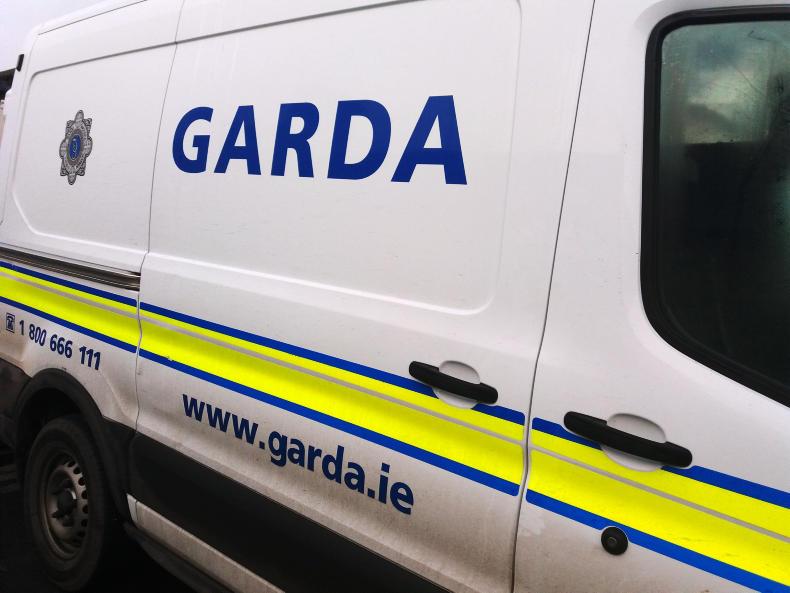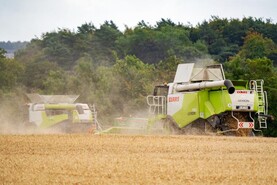Not all cowboys ride horses and not all crime is the stealing of quad bikes and chainsaws. The CSO’s latest statistics on crime trends show an increase in online fraud and deception such as ringing rural dwellers over the phone pretending to be someone else.
Earlier in the summer, then Justice Minister Charlie Flanagan said there was an almost 15% increase in recorded incidents of fraud and deception. He said: “This increase of over a thousand recorded incidents of fraud and deception underscores the point made recently by gardaí regarding the increasing activity of criminals in this area, including in particular online scams and financial fraud. We must all be vigilant to such attempted frauds and report any instances to gardaí. I believe this increase is also reflective of a significant step-up in recording of incidents and policing activity in relation to fraud, including through the training offered by the Garda National Economic Crime Bureau to officers at a divisional level, allowing local gardaí to continually improve their expertise and awareness of crimes of this nature.”
The CSO analysis shows that in Q1 of 2020 and compared to the same period in 2019, there were decreases across a range of crime categories, including homicide and related offences (-16.9%); sexual offences (-4.6%); dangerous or negligent acts (-1.4%); kidnapping and related offences (-3.6%); robbery, extortion and hijacking offences (-4.7%); burglary and related offences (-1.9%); theft and related offences (-0.4%); damage to property and the environment (-1.7%); public order and other social code offences (-2.5%); and offences against Government, justice procedures and organisation of crime (-4.7%). The CSO also identifies increases in controlled drug offences (15.7%), fraud and deception (14.9%), weapons and explosives offences (11.3%) and attempts or threats to murder and assault (2.1%).
The CSO release also details crime statistics over the five-year period from Q1 2016 to Q1 2020. It shows that in this five-year period, there have been increases across a number of crime categories, including sexual offences (+34%); attempts/threats to murder, assaults, harassments and related offences (+25%); dangerous or negligent acts (+21%); fraud, deception and related offences (+44%); controlled drug offences (+43%); weapons and explosives offences (+19%); and offences against Government, justice procedures and organisation of crime (+31%).
Meanwhile, across the same five-year period there have been decreases across a range of crime categories, including homicide and related offences (-29%); kidnapping and related offences (-8%); robbery, extortion and hijacking offences (-5%); burglary and related offences (-30%); theft and related offences (-8%); damage to property and the environment (-14%); and public order and other social code offences (-3%).
Reflecting on the five-year trends, Minister Flanagan continued: “While these five-year trends demonstrate a continuing challenge in some areas, in particular assault and drugs offences, we should acknowledge too that gardaí are continuing to have a significant positive impact on a range of crime types. For example, these figures show a clear downward trend in burglaries over the last five-year period, with a 30% reduction in burglaries and related offences over that time period. I am conscious of the trauma and sense of violation that a burglary of one’s home can bring. I am heartened to see this sustained reduction in burglaries and would like to pay tribute to the consistent attention brought by gardaí to disrupting burglary gangs.”
In short
Drug-related and fraud offences rose in the year to Q1 of 2020, including a significant increase in detection of instances of driving a vehicle under the influence of drugs.Decreases in the most of other crime categories for Q1 2020.Trends over a five-year period show a sustained reduction in burglaries and theft, as well as a consistent increase in drug-related offences.Drones, satnavs
and fast cars
According to the CSO’s statistics, close to half a million burglaries were recorded in Ireland over a 16-year period up to last autumn. Most happened in the Dublin region. Outside of Dublin, the counties with the highest burglary rates are all directly accessible via the motorway network, with a further 30% of burglaries in the period happening in Cork, Kildare, Limerick, Galway, Louth and Meath. In comparison, those counties isolated from the motorway network saw the lowest occurrence of burglary. For example, Kerry, Sligo, Leitrim and Mayo, have a combined share of only 4% of burglaries over the same period.
While most burglars prefer to commit crimes near where they live because they know the area, the motorway network has facilitated a growing trend of burglars committing crimes far away from their homes.
This trend is powered by technology – satnavs come pre-installed in cars, military grade binoculars and drones are available online and WhatsApp messages can be encrypted. It has never been easier for a burglar to find what they are looking for and to get away with it.
Not all cowboys ride horses and not all crime is the stealing of quad bikes and chainsaws. The CSO’s latest statistics on crime trends show an increase in online fraud and deception such as ringing rural dwellers over the phone pretending to be someone else.
Earlier in the summer, then Justice Minister Charlie Flanagan said there was an almost 15% increase in recorded incidents of fraud and deception. He said: “This increase of over a thousand recorded incidents of fraud and deception underscores the point made recently by gardaí regarding the increasing activity of criminals in this area, including in particular online scams and financial fraud. We must all be vigilant to such attempted frauds and report any instances to gardaí. I believe this increase is also reflective of a significant step-up in recording of incidents and policing activity in relation to fraud, including through the training offered by the Garda National Economic Crime Bureau to officers at a divisional level, allowing local gardaí to continually improve their expertise and awareness of crimes of this nature.”
The CSO analysis shows that in Q1 of 2020 and compared to the same period in 2019, there were decreases across a range of crime categories, including homicide and related offences (-16.9%); sexual offences (-4.6%); dangerous or negligent acts (-1.4%); kidnapping and related offences (-3.6%); robbery, extortion and hijacking offences (-4.7%); burglary and related offences (-1.9%); theft and related offences (-0.4%); damage to property and the environment (-1.7%); public order and other social code offences (-2.5%); and offences against Government, justice procedures and organisation of crime (-4.7%). The CSO also identifies increases in controlled drug offences (15.7%), fraud and deception (14.9%), weapons and explosives offences (11.3%) and attempts or threats to murder and assault (2.1%).
The CSO release also details crime statistics over the five-year period from Q1 2016 to Q1 2020. It shows that in this five-year period, there have been increases across a number of crime categories, including sexual offences (+34%); attempts/threats to murder, assaults, harassments and related offences (+25%); dangerous or negligent acts (+21%); fraud, deception and related offences (+44%); controlled drug offences (+43%); weapons and explosives offences (+19%); and offences against Government, justice procedures and organisation of crime (+31%).
Meanwhile, across the same five-year period there have been decreases across a range of crime categories, including homicide and related offences (-29%); kidnapping and related offences (-8%); robbery, extortion and hijacking offences (-5%); burglary and related offences (-30%); theft and related offences (-8%); damage to property and the environment (-14%); and public order and other social code offences (-3%).
Reflecting on the five-year trends, Minister Flanagan continued: “While these five-year trends demonstrate a continuing challenge in some areas, in particular assault and drugs offences, we should acknowledge too that gardaí are continuing to have a significant positive impact on a range of crime types. For example, these figures show a clear downward trend in burglaries over the last five-year period, with a 30% reduction in burglaries and related offences over that time period. I am conscious of the trauma and sense of violation that a burglary of one’s home can bring. I am heartened to see this sustained reduction in burglaries and would like to pay tribute to the consistent attention brought by gardaí to disrupting burglary gangs.”
In short
Drug-related and fraud offences rose in the year to Q1 of 2020, including a significant increase in detection of instances of driving a vehicle under the influence of drugs.Decreases in the most of other crime categories for Q1 2020.Trends over a five-year period show a sustained reduction in burglaries and theft, as well as a consistent increase in drug-related offences.Drones, satnavs
and fast cars
According to the CSO’s statistics, close to half a million burglaries were recorded in Ireland over a 16-year period up to last autumn. Most happened in the Dublin region. Outside of Dublin, the counties with the highest burglary rates are all directly accessible via the motorway network, with a further 30% of burglaries in the period happening in Cork, Kildare, Limerick, Galway, Louth and Meath. In comparison, those counties isolated from the motorway network saw the lowest occurrence of burglary. For example, Kerry, Sligo, Leitrim and Mayo, have a combined share of only 4% of burglaries over the same period.
While most burglars prefer to commit crimes near where they live because they know the area, the motorway network has facilitated a growing trend of burglars committing crimes far away from their homes.
This trend is powered by technology – satnavs come pre-installed in cars, military grade binoculars and drones are available online and WhatsApp messages can be encrypted. It has never been easier for a burglar to find what they are looking for and to get away with it.






 This is a subscriber-only article
This is a subscriber-only article









SHARING OPTIONS: